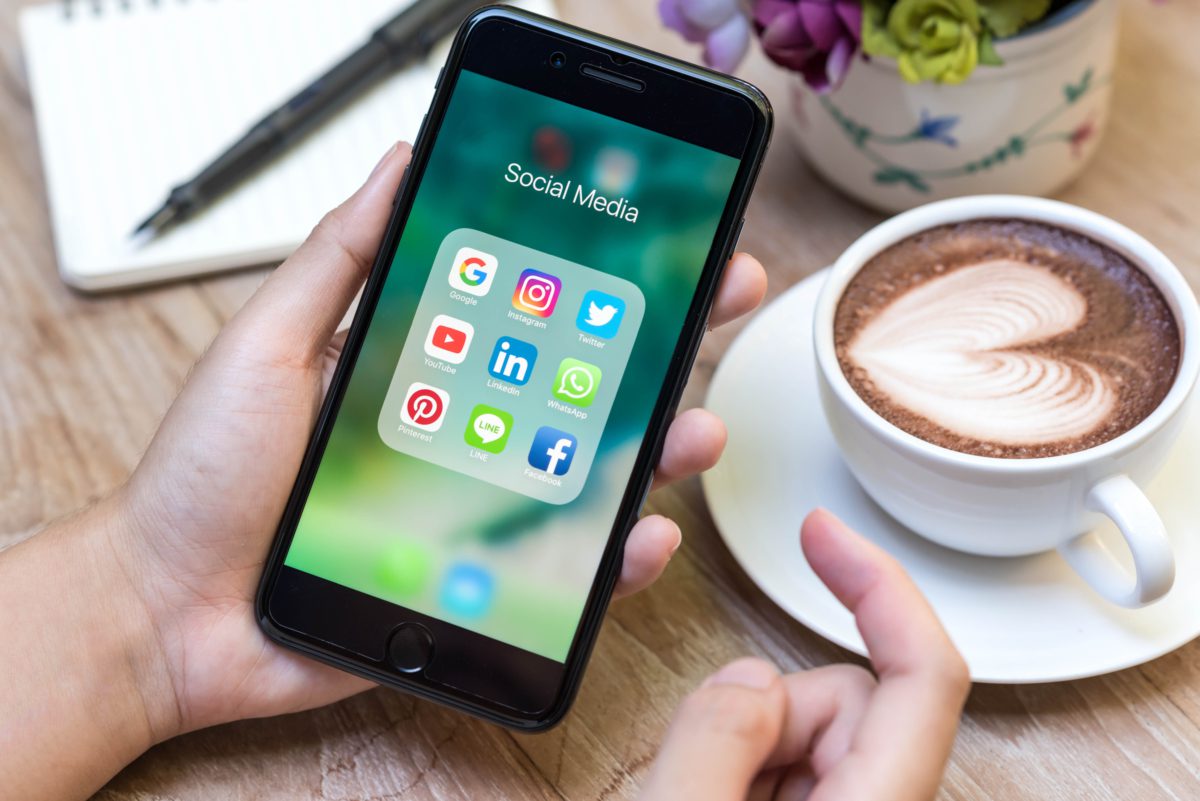Imagine the frustration of entering a store with no clear signage, disorganized shelves, and no staff to guide you. How long would you stay? The same applies to website navigation.
The dynamic development of digital technologies, that has been going on for several years now, affects the way companies and organizations function. They must implement changes on an ongoing basis to ensure that their businesses work properly and attract new clients. This also applies to marketing which has almost completely moved to the Internet over the years. The web has become a huge tool not only for acquiring customers, but also for interacting with them. Modern technologies make all of those processes easier and more efficient – provided that they are implemented in the right way. Entrepreneurs have to keep an open mind and search for new solutions, as they play an important role in automation of many processes.
What is Internet marketing?
Marketing is a series of activities aimed at informing people, potential customers, about the existence of a company and its products or services. The goal is to encourage consumers to endorse a given brand. As the Internet grew, marketing started to move towards it. Almost everyone goes online on a daily basis, and information spreads over there in the blink of an eye. Additionally, there are many tools that make contact and interaction with clients easier. There is probably no company that does not have a website or a corporate blog. In addition, almost every company has social media accounts and uses the opportunities offered by Google – as it is no longer just a search engine. It uses SEO that allows a company page to appear as high as possible in the search results. Google My Business listings and Google Ads enable paid advertising campaigns. However, having a website, a blog and a Facebook account is not enough. New technologies are constantly entering the market to facilitate marketing activities by automating them. The company has no chance of appearing high in the search results without their implementation.
What is a marketing technology stack and how to pick the best one?
With the development of technology, the concept of the so-called technology stack appeared. What is that? It is a combination of various technological products and services working together to create and complete a project or a task, for example an application. Initially, the term was mainly used by programmers, but it spread and is now used in the context of, for example, financial services (FinTech stack) or just marketing (MarTech stack). For marketing to work properly, it is necessary to plan an appropriate marketing technology stack.
Using the right technology stack can help you implement new solutions faster, scale up your marketing efforts, run an all-in-one ecosystem instead of the so-called “silo work,” share data and collaborate more effectively, as well as offer your customers rich, personalized experiences. In addition, a properly planned stack saves a lot of money. It is not an easy task, especially since companies offering MarTech solutions pop up on the market like mushrooms after rain.
How to plan a marketing technology stack?
Start slow, from the little things. Nothing good will come from throwing yourself in at the deep end. First, you need to choose the basic solutions and start using each of them fully before choosing the next ones, in accordance with the latest trends. It should also be remembered that the technology is supposed to work for users, not the other way around. The impressive list of features of a given tool does not matter much until the company’s employees are willing to use it.
Think how they work. In the office or remotely? Do they use laptops, PCs or just smartphones? What customers do they service and how many? When choosing new solutions, you should bear in mind that they must work well with the old ones. When choosing new tools, it is worth paying attention to, for example, the ease of transferring data from the old ones. Another very important issue is, of course, security. Many marketing tools require you to share even the most confidential data with a third party. Therefore, it is necessary to ensure the best possible protection for them.
The company is a kind of ecosystem made up of tools and of course the people who use them. The technology stack must therefore integrate with other tools, as well as with employees who need to be able to interact with the tools. The solutions in the stack also need to be scalable. There is no point in training employees to use a tool that will only be used for a short time. When implementing new solutions, you should make sure that you can quickly abandon the ones that are ineffective. The technology stack must also be future-proof. It has to be flexible and configurable if the business is to keep up with the competition. So you should only use tools that offer regular updates. Another important thing in planning your technology stack is, of course, the cost. Everyone wants to pay as little as possible. However, just because you choose something inexpensive at the beginning, it does not mean that the costs will not increase in the future as your business grows. You should also analyze your competition. It is important to know what other companies from your field are up to. What are they using in order to be at their level?
How is technology used in marketing? 9 examples
Nowadays, the use of technology in marketing is indispensable, as consumers have already got used to personalization or automation of service. Customers’ expectations also change with the development of technology. Old fashioned companies that do not want to implement new solutions risk falling behind their competitors. How should the technology be used? First of all, almost every company has a marketing team composed of specialists in planning, preparing and implementing marketing solutions. Technologies used in marketing are designed to attract potential customers and influence the sale of a product or service. Everything counts here, from the website, its appearance, navigation, content published on it, SEO, advertising campaigns, mailings or properly maintained social media accounts, such as Facebook, Instagram, Twitter or LinkedIn.
Each of these tools implement technologies, which makes life easier for both company employees and customers. The main technologies supporting online marketing are, for example, newer text editors, text correction tools or programs that facilitate content optimization for SEO. To this pool, you need to add tools that automate newsletters and e-mails or newer tools made available by social networks to facilitate the configuration of posts, chats, or advertisements. There are many options to choose from. Below you can find some of the technology in marketing examples.
Voice search
Modern marketing cannot exist without it. It is much more convenient than tedious typing of long phrases into the search window. The most modern solutions in this area include, of course, intelligent speakers, such as the Amazon Echo or Google Home. In addition, more than 30% of smartphone users worldwide use Siri Voice Search at least once a week. It has been estimated that in 2020 more than 50% of searches will be carried out using voice search. This indicates that in the years to come this way of searching for information will become even more popular. Voice search and commands are therefore the main technologies that will support online marketing in 2022. How do I optimize my site for voice search? The most important thing is to change the keywords used on the website to long-tail phrases, i.e. consisting of at least a few words. It will be a very good idea to use questions, because in voice search, the user usually asks a question to receive an answer. It’s better to replace the phrase “healthy snack” with a question: “How to make a healthy and tasty snack?”
Social media posts with the product label and the option to buy it from the post
More and more people shop while going through their social media apps. Up to 60% of Instagram users say they find new products to buy right there. As many as 70% of Pinterest users say the same. In the case of Facebook, there are probably even more such people. Social media platforms are noticing that people are increasingly buying through them and are making it easier for sellers. Instagram, Facebook and Pinterest are creating new ways for online stores to create posts from which it is possible to purchase products using native integration. It makes it easier to tag and buy products directly from the post. For stores, this is a great way to increase traffic on their product pages.
AR and VR searches
AR, i.e., Augmented Reality, and VR, i.e., Virtual Reality have significantly gained in popularity in the last few years and have quickly become one of the largest modern marketing trends. Although VR has been more popular for a long time, AR has already surpassed it and now has a significant advantage. Augmented reality is already used, for example, by the Swedish furniture giant IKEA. Using AR and a mobile application on a smartphone, customers can see what a selected piece of furniture can look like in their interior before buying or even visiting a store.
Interactive content
Texts with links and some pictures are a thing of the past. Now customers are looking for more interactive content. Examples of such content are entries using AR and VR technologies, 360-degree videos, polls and quizzes. Such content is relatively new and helps to stand out and break through the competition. In addition, they give users a reason to spend more time on a website and often allow them to share their ideas on social media. Each of us sees this type of post on Facebook or Instagram at least once a day. Sharing content increases brand awareness among people. They love to interact and this kind of content simply enables them to do so.
Google Ads smart bidding
Automation is by no means new to the world of Internet marketing, but now, thanks to numerous Google Ads updates announced on Google Marketing Live, automation along with smart bidding is becoming the norm for PPC account managers. Optimizing your bids helps you get the most value out of each conversion. These improvements make optimization better than ever. This is due to the possibility of selecting conversion actions at the advertising campaign level, optimizing bids in several campaigns with a set of desired conversion effects, or the possibility of setting automatic bid changes at the beginning and end of the campaign. The effect of these improvements is to maximize the number of conversions.
Personalization
The customers can become irritated when websites display advertisements with products that they are not interested in. They expect personalization, i.e. matching the displayed ads to their interests and needs. When you are not interested in something, you leave the page on which the advertisement appears, you give up on mobile games in which ads are disturbing your gameplay, install AdBlock in your browser or pay for premium services to avoid them. This way advertisers lose money. As many as 90% of 1000 people surveyed said that personalized ads are more attractive, and 80% say that they are more likely to buy products, services or cooperate with companies that use personalization. Technology for marketers offers many solutions in that area. Segmented email lists, for example, are among the most popular ways of personalization. Messages sent using that method are even three times as effective as the traditional newsletter. List segmentation is facilitated by many tools, whether for mailing (MailChimp) or marketing automation (HubSpot, Pardot). Facebook, Allegro and Google track the actions of users. They display personalized ads to them based on what they browse, click on, react to and what they order. Marketing platform integrations can significantly improve personalization by providing more detailed and accurate customer data. Personalization is nowadays a necessity in marketing.
Social applications for communication in SM
Facebook Messenger, WhatsApp, WeChat and other such applications are no longer used only for contacting friends. Companies already use them frequently to contact clients. Messenger already records over 10 billion messages exchanged between companies and customers every month. As we know, customers love interaction, and such applications are perfect for this purpose. Customers appreciate them for the convenience of use and the possibility of direct contact with the company. These applications allow companies to interact with customers, service them and build appropriate relationships, provide company information regarding its products, services or values, as well as to increase sales or invite customers to events. In addition, most of the apps offer message automation. This way some of the queries can be answered automatically. For example, Messenger allows you to create queries with pre-written explanations. The customers can simply click on them to get answers for the most common questions. It’s a very convenient solution for everyone.
Chatbots
A chat window might appear somewhere on the screen when visiting various websites. This does not mean, however, that you’re going to have a conversation with a human being. The development of artificial intelligence allowed us to create not only tools such as the aforementioned Alexa, but also the so-called chatbots. They’re just automated chats that allow you to ask questions and get almost instantaneous answers. It is a convenient solution for companies, which additionally saves them money as they do not have to hire additional employees. Chatbots are also a convenient solution for customers who can ask a question at any time of the day or night and receive an answer immediately, without having to wait. Nowadays, chatbots are becoming even more advanced and can handle even some complex queries. This technology is constantly being improved and makes online interactions faster and more efficient.
Position Zero in SERP
SERP is the abbreviation of Search Engine Results Page. It uses SEO to determine the order in which pages should be displayed. For some time now, the first position in the results no longer contains advertised content. There is a new position, “zero,” in the form of the so-called “direct answer.” It is a fragment of a text that, according to the search engine algorithm, best answers the question asked by the user. Of course, there is a link to the source next to that text. What should we do to make our content take that spot? In order to claim it, key phrases should be used in the form of questions.
There are many more examples of how the technology is used in marketing, but the above ones are the most important and modern. We can be sure that new, further facilitating processes solutions will be introduced in the future. The most important thing is to be up to date with new products introduced to the market.
Technological partnership
The impact of technology on marketing is huge, so when you run a company and want to implement marketing activities, you have the choice of employing specialists and programmers in the company or working with them in the form of a so-called “technological partnership”. Hiring employees piles up costs and the recruitment process can be time consuming. You never know how they will work in your team, even after recruiting people with great knowledge and a skill set. Marketing activities might be brought to a halt when one or two people will get sick. After all, they work as a team. To avoid such situations, it is worth choosing to cooperate with specialists – a company that will take care of everything from scratch, starting from the plan, through the preparation of the marketing strategy and the technological stack, to the implementation of new solutions. A web development agency is a team of qualified and experienced people who have already completed many projects similar to yours. In addition, agencies work with the best equipment and tools and always follow the latest trends. Because of that, there is no risk associated with high costs or a sudden interruption of marketing activities. You can rest assured that everything will be updated on a regular basis and changed along with not only the advancements made in the field of marketing, but also the evolution of your services or products. Such services are more than just ordinary outsourcing. Nopio offers professional tech partnership, you can learn more about it by clicking on this link. In addition, the Nopio agency offers professional web consulting services – also in the field of Internet marketing. By choosing to work with us, you can rest assured that you will achieve your business goals thanks to advanced technological solutions that you cannot provide your employees with by yourself.
The importance of technology in marketing – summary
Not many things are as important as technology for marketing. The automation of various processes, artificial intelligence, improvements on social networks and Google are already entering the game. Digitization and automation will continue to develop and newer solutions will appear, without which there will be no chance to achieve success in sales. The pandemic has also made its mark, as the majority of companies were forced to switch entirely to remote work. Many consumers prefer to buy and do errands online whenever possible as well. Therefore, being up to date with new technologies is necessary to enjoy high sales and recognition among many customers.






